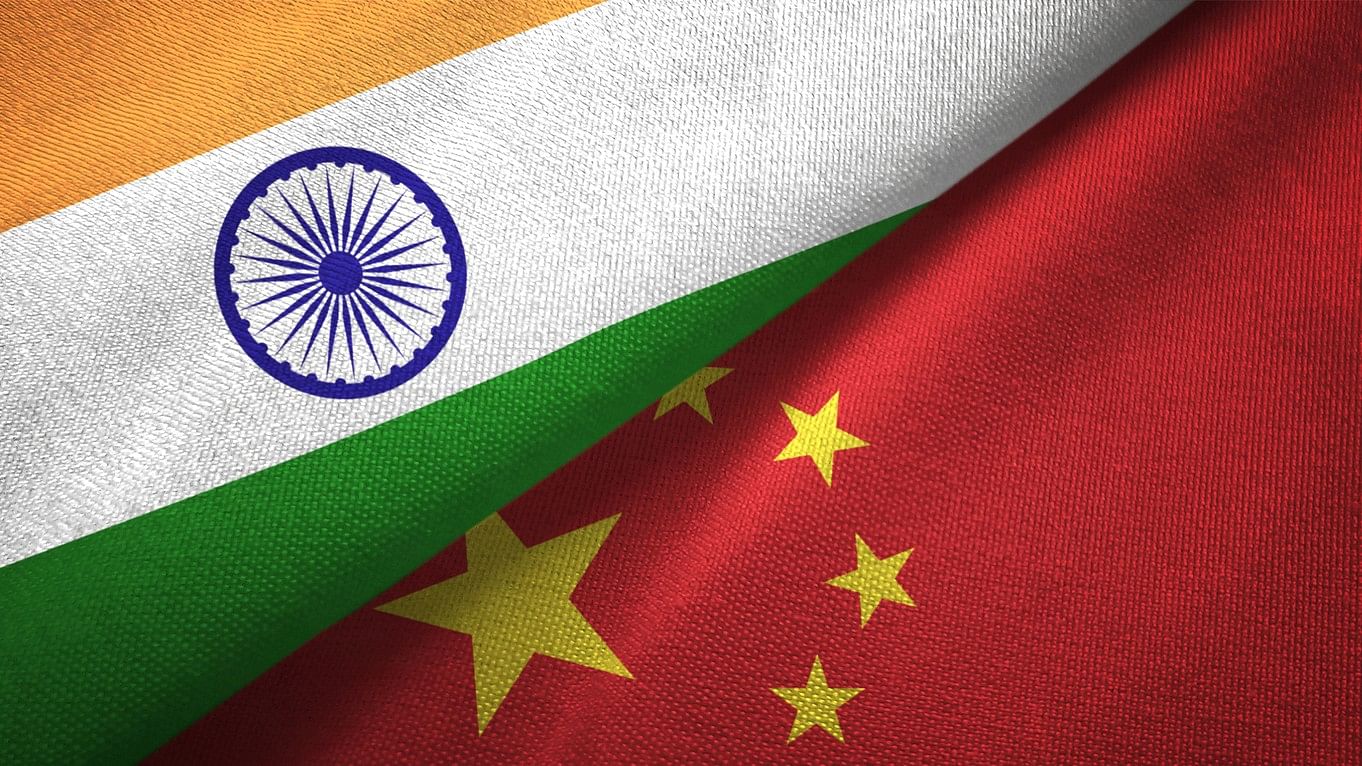
The flags of India and China.
Credit: iStock Photo
New Delhi: India is considering a tit-for-tat response to China’s move to expand and buttress its territorial claims by renaming places along the disputed boundary between the two nations.
A proposal for renaming some of the places claimed by India but under the occupation of China is being studied by the government. If New Delhi gives the go-ahead, around 30 places along the disputed boundary between the two nations will be named in the respective local languages of India.
New Delhi is considering the proposal as a tit-for-tat response to Beijing’s move in the past seven years to rename 62 places in Arunachal Pradesh of India in Mandarin and Tibetan languages in order to assert its territorial claims.
A source in New Delhi said that the proposal would be studied by a government panel, informally called the ‘China Study Group’, which had representatives of the Ministry of Defence, Ministry of External Affairs, Ministry of Home Affairs, intelligence agencies, and the armed forces.
The national mapping agency, Survey of India, would also be roped in while deciding on the proposal, the source told DH.
The Ministry of Civil Affairs of the Chinese Government on March 31 “standardized” in Mandarin Chinese characters as well as in Tibetan and Roman alphabets the names of the 30 places in Arunachal Pradesh. China had earlier renamed six places in the northeastern state of India in Mandarin and Tibetan in April 2017, 15 more places in December 2021, and 11 more places in April 2023. New Delhi rejected Beijing’s move outrightly, calling it senseless.
China moved to assert its territorial claim on Arunachal Pradesh and thus to challenge that of India even as the four-year-long stand-off between its People’s Liberation Army (PLA) and the Indian Army along the western sector of the Line of Actual Control (LAC) – the de facto boundary between the two nations – in eastern Ladakh could not be completely resolved yet.
New Delhi claims that China is illegally occupying about 38,000 sq. km of India’s territory in Aksai Chin, which borders eastern Ladakh. Pakistan also ceded to China about 5,180 sq. km of India’s territory in Saksgam Valley in 1963.
Beijing claims 90000 sq. km of areas in Arunachal Pradesh of India as part of the territory of China and calls it Zangnan or south Tibet. Beijing also claims a 2,000 sq km area in the Himachal Pradesh and Uttarakhand state of India.
The government would decide on the proposal for the tit-for-tat renaming exercise only after studying the implication of such a move on New Delhi’s stand on Tibet, said the source.
According to the joint declaration on ‘Principles of Relations and Comprehensive Cooperation’ issued by the then Prime Minister Atal Behari Vajpayee and his then counterpart Wen Jiabao after a meeting in Beijing on June 23, 2023, India had recognised the Tibet Autonomous Region as a part of the territory of the People’s Republic of China.
New Delhi, however, continues to host the Dalai Lama, who has been living in exile in India following his 1959 escape from Tibet, which had been occupied by the Chinese People’s Liberation Army (PLA) in 1950-51. Dalai Lama, the icon of the global resistance against China’s occupation of Tibet, lives at Dharamshala in Himachal Pradesh of India. The Tibetan Government in Exile (formally known as the Central Tibetan Administration) is also based in Dharamshala.
